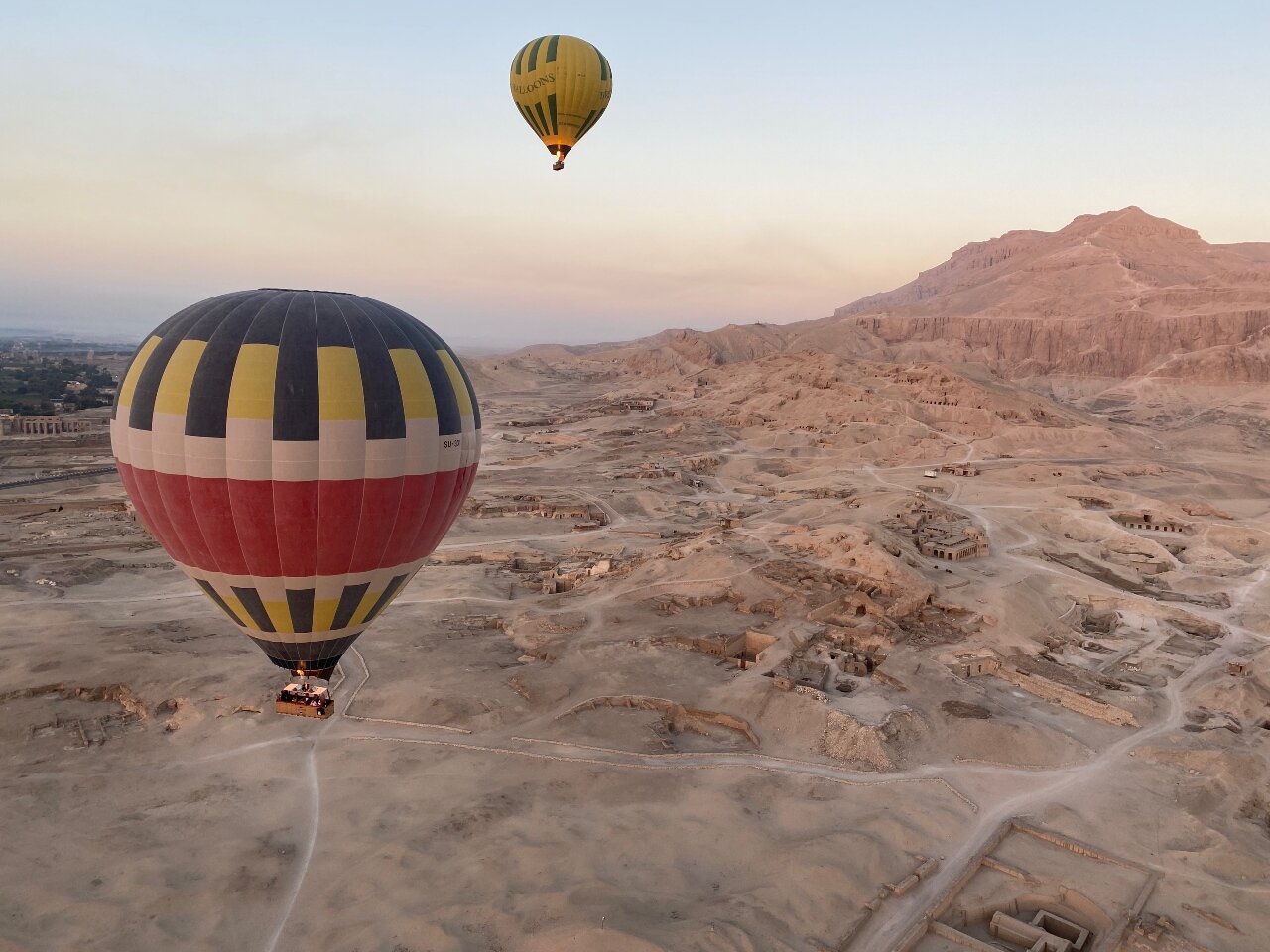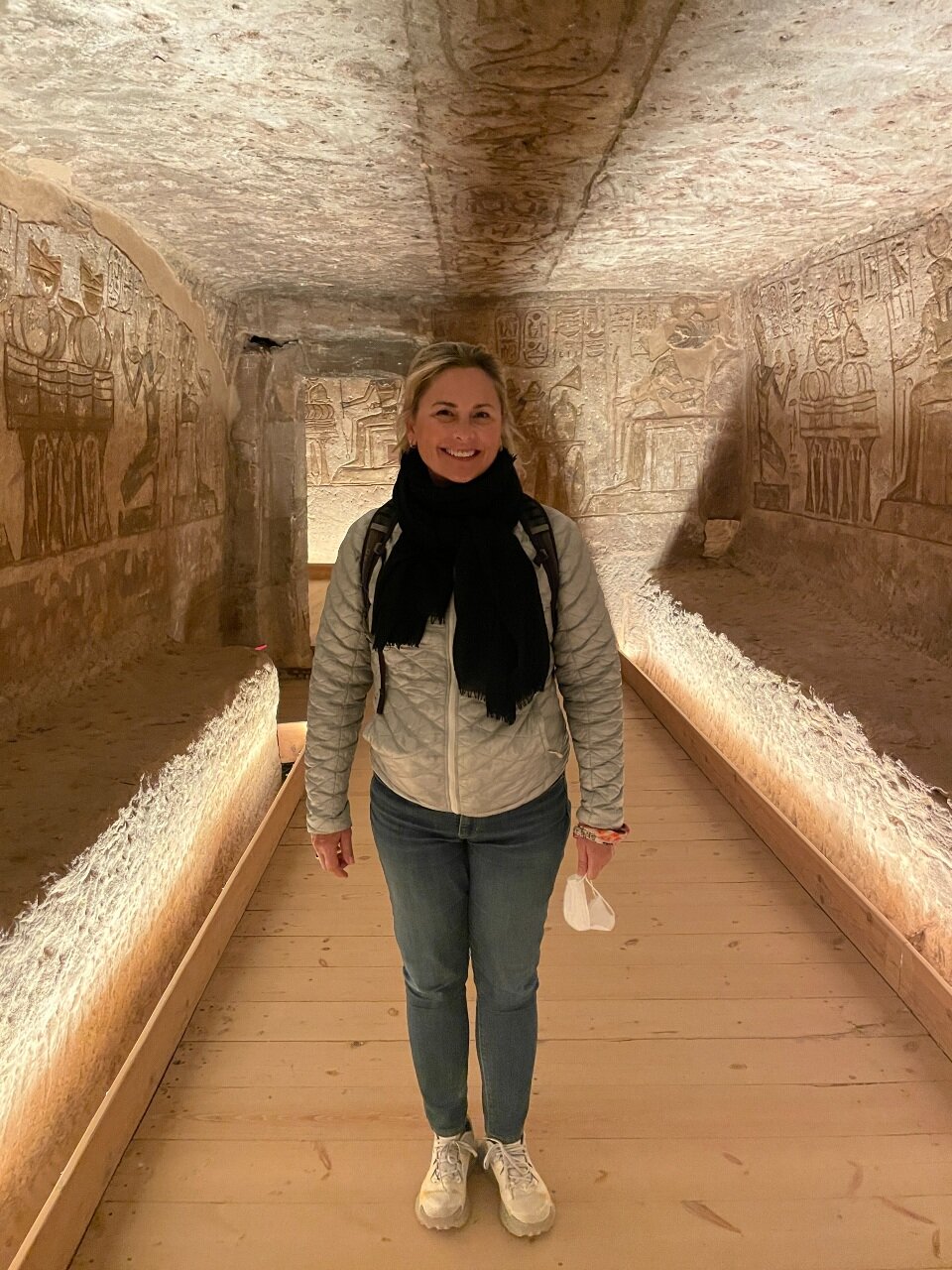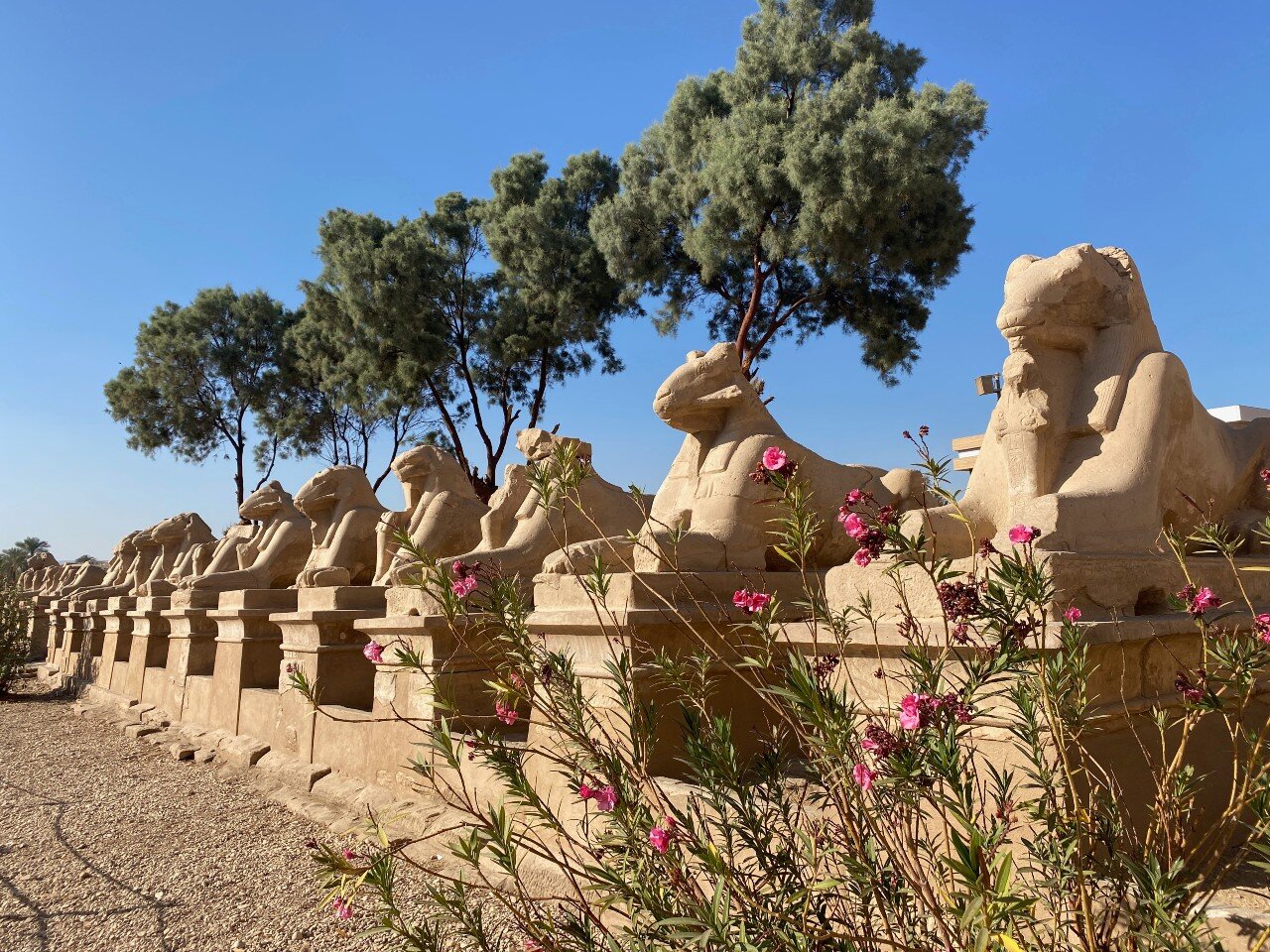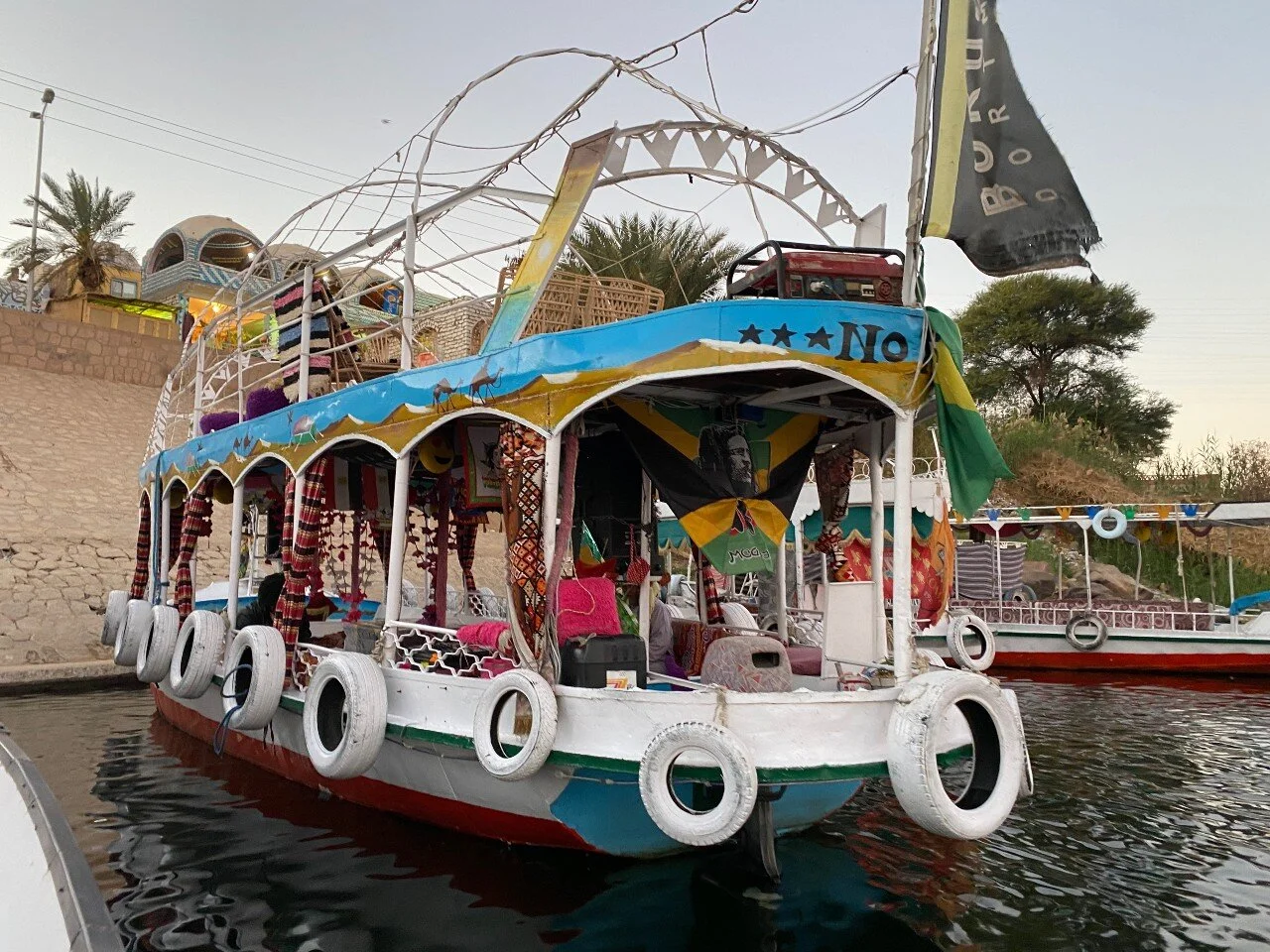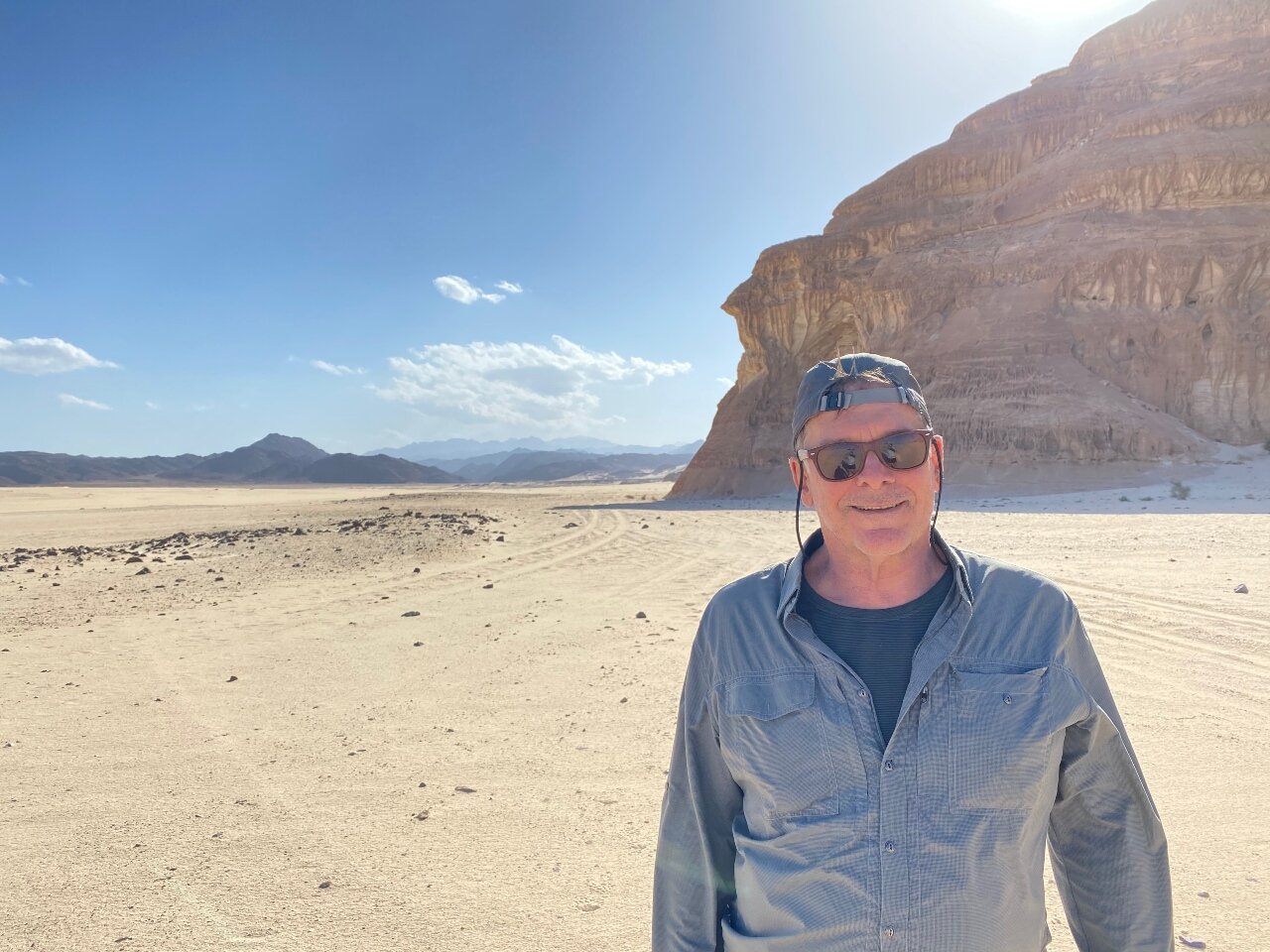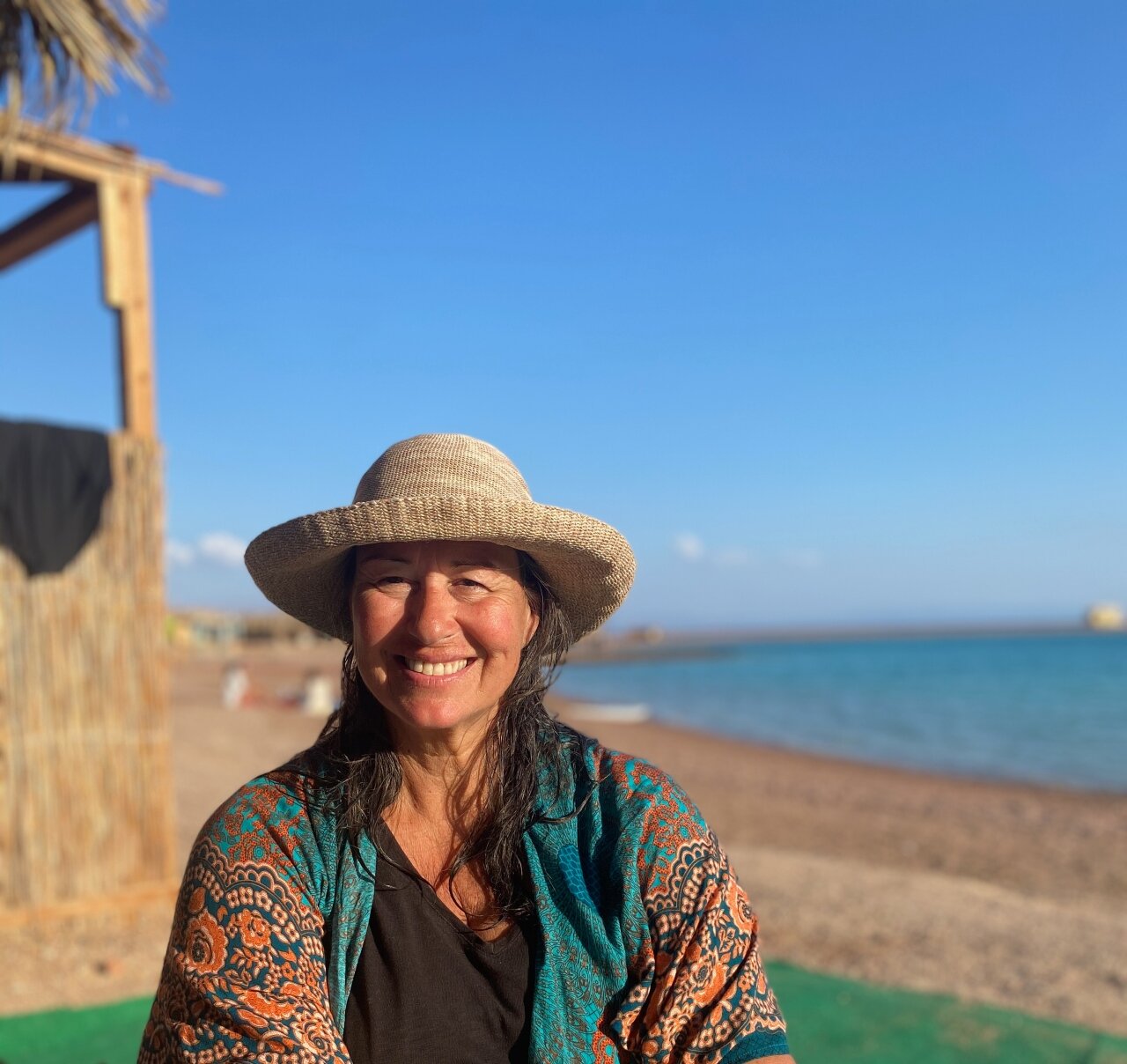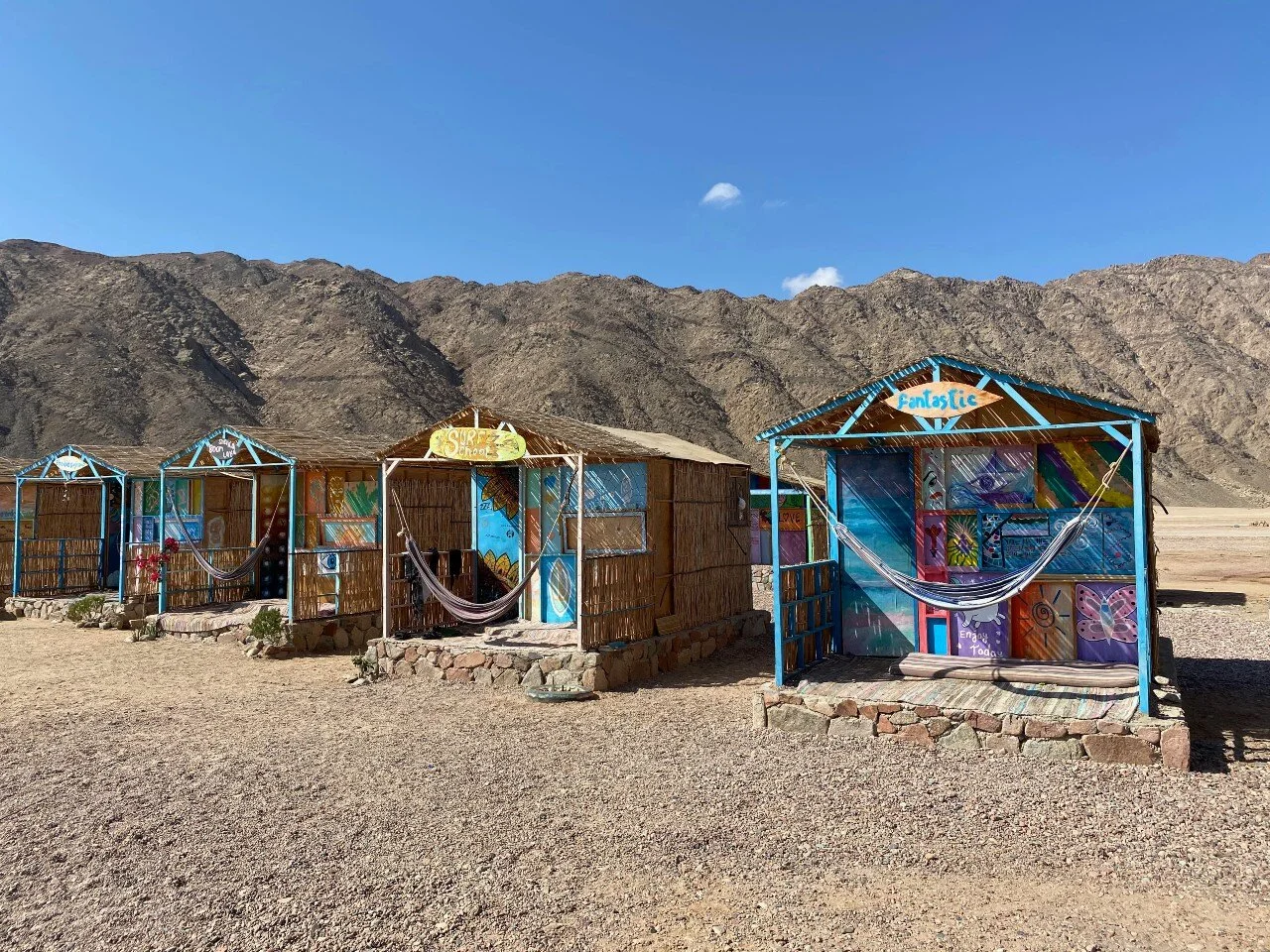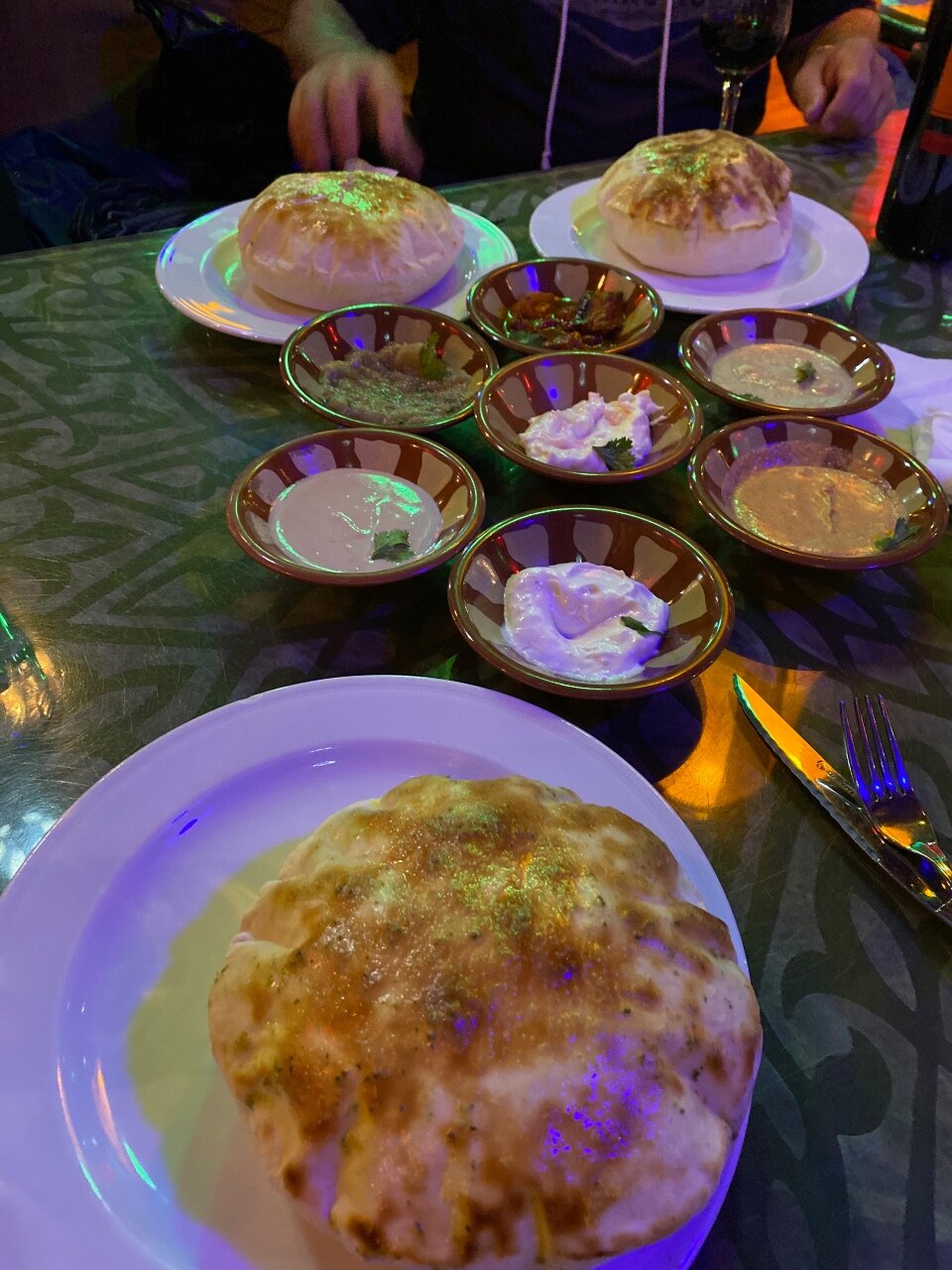How could we spend time in Egypt without visiting the great historic sights? It was on both Kelly and my bucket list to see them, so after our relaxing month in the Sinai off we went with a short flight to Luxor — the ancient city nestled along the Nile.
THE NILE RIVER
Spanning over 4,000 miles and crossing eleven countries, the Nile meanders northward from the Ethiopian highlands to Cairo, where it empties into the Mediterranean Sea. But it is Egypt that truly gives the Nile its magic. The annual flooding created a fertile valley that allowed the Egyptian culture to emerge 4,000 years ago — eventually dominating the ancient world and our imaginations.
Along the Nile, three cities stand out like pearls on a necklace, tying together this powerful civilization — Aswan, Luxor and Cairo. To visit Egypt and see its splendor means exploring all three.
And that’s exactly what we did.
The peaceful Nile outside of Aswan
LUXOR
Happy hour was always an epic event
Kelly and I were excited to see the sights that Egypt is famous for. After spending a month in dirty, dusty Dahab, we splurged on a nice hotel. It just so happened that I had rewards points from a Hilton Amex card that I opened just for this purpose. Luckily in Egypt, we got an entire week at the nicest hotel in Luxor.
The Luxor Hilton was a wonderful hotel nestled directly on the Nile. We got spoiled with the sunsets, our king sized bed and superb service. As darkness fell, we could see the lights exposing the cragged cliffs of the Valley of the Kings.
Once there, we didn’t want to leave!
We gave ourselves a few days to settle in before exploring.
We got connected to a wonderful driver named Mohammed — recommended by our fellow world travelers, friends Joe and Josée. He took great care of us during our stay.
OUR FIRST HOT AIR BALLOON RIDE
We wanted to find a fun way to get started and couldn’t think of anything better than an early morning balloon ride over the nearby sights. We missed the opportunity in Cappadocia, so we jumped at the chance here. Getting a sunrise view over the Valley of the Kings was a great way to understand the interconnectedness of the ancient cities and temples.
VALLEY OF THE KINGS
The next day we drove to the expansive Valley of the Kings — about an hours drive out of town. We didn’t know what to expect as we drove up a well-paved canyon towards a large parking lot. Normally it’s packed with tourists, but of course due to Covid, it was empty.
Egypt has definitely felt the pinch from lack of tourists. You can see and feel this in that no matter where you go. Upon arrival you get constantly hassled by vendors trying to sell you their whatever they have to offer. To say this gets tiring is an understatement. I found the best way to deal with it was to put on my mask, pull down my hat, add sunglasses and walk briskly without making eye contact. Harsh? Maybe. But if you don’t, you’re likely to get sucked into buying something you’ll later just throw away. Just ask Kelly. :)
But once through the tout madness, we were in for a treat. The Valley of the Kings is a magical, if somewhat expensive, journey into the tombs of the ancient kings and queens of Egypt (tickets with a local guide $175).
Keep in mind that the magic is underground — hidden in mine-like shafts dug deep into the hills. They were built this way to hide and protect their treasures from robbers and even other royalty. Hearing stories from our guide, I began to realize that the kings and queens of the time were a vengeful bunch, often erasing the memory of a rival and placing their “signature” at the tomb entrance — ensuring that they would deserve an eternal life of abundance.
TEMPLE OF DENDERA
Forty-five minutes in the other direction is the awe-inspiring Temple of Dendera. This site is one of the best-preserved temples in Egypt. It was known as the “Castle of the Sistrum” or “Pr Hathor”— House of Hathor, the goddess of love, joy, and beauty.
It was that and more.
The main chamber has been cleaned and restored. We didn’t find a more impressive temple throughout our Egyptian travels. To see a hint as to how colorful these places were, set my imagination ablaze.
The ceiling at Castle of the Sistrum
KARNAK TEMPLE
Closer to home was the huge Temple of Karnak.
The key difference between Karnak and most of the other temples and sites in Egypt is the length of time over which it was developed and used. It was built (and rebuilt) over 2,000 years and still never finished. About thirty pharaohs contributed to its construction, enabling it to reach a size and complexity not seen anywhere else. It is quite overwhelming.
Exploring this large complex was a great way to spend the afternoon. We were a bit surprised at how many tourists were there. What we discovered was that Egyptians love their country too and like to get out and see these sights as much as we do.
NILE CRUISE
Pretty much everyone we talked to told us to take a Nile cruise. They usually last between 3 and 4 nights and sail between Luxor and Aswan (or vice-versa). They are a bit pricey but, if you’re flexible, you can get a good deal, which is what we did.
We’ve never been on a cruise before and it turned out to be a bit of a shock to our system (digestive, that is). We were treated to three large buffets every day. Happily, the food (and deserts) were good and the trip turned out to be relaxing. Our only complaint was that the weather didn’t behave and it was quite chilly. We spent most of our time downstairs working on our blog and staring out the window.
But twice we stopped and had a guide waiting for us to explore some lovely out of the way sights.
ASWAN AND ELEPHANTINE ISLAND
Debarking in Aswan, we were in for a treat. It is smaller and lower-keyed than Luxor. We decided to stay at the Mango House, a small, funky hotel with a local boho vibe on Elephantine Island — one of the smallest islands off the coast. It was a treat to walk around this tiny island dotted with huge Mango trees. I only wish the mangos were in season.
THE NUBIAN VILLAGE
We were now in Nubian country.
The Nubian culture is centered in this part of Egypt (and northern Sudan), and are the indigenous people of the area. Darker in skin and mellow in temperament, they reminded me of the Bedouins in Dahab.
The Nubian village
Our island had many colorful Nubian houses, but to get the full Nubian experience, we had to motor upstream to their famous village.
We were in for a treat.
The Nile near Aswan was very different from what we saw in Luxor — not as wide and broken up by small islands and rocky outcroppings. In certain places the river’s current caused cascading rapids — very intimate and beautiful.
One of the surprising moments was when we stopped along the river at an open-air coffee bar. Under a large tent in the middle of a huge expanse of rugs was “the barista.” Kelly and I sat cross-legged in front of him as he roasted green coffee beans in a small pot over an open fire. As the smell of freshly roasted beans filled the air, he ground them with a mortar and pestle, and then placed the still warm coffee in a beautiful ceramic pot, then added ground ginger and hot water. The magic concoction was poured into a small cup. Adding ginger was the true surprise. Unlike any coffee I’ve ever tasted.
Hot liquid love
ABU SIMBA TEMPLE
One morning we woke before dawn and jumped into a van to be whisked away through the empty desert. Located a long 5-hour drive from Aswan are the impressive Temples of Abu Simba.
It was cold and windy when we arrived. We bundled up and headed to its imposing entrance. We marveled knowing that the entire structure, including the tombs, were relocated to this spot.
In the 60’s, the new High Dam was being finished. Engineers knew that the rising waters of Lake Nasser were going to flood these sacred tombs. In a massive relocation project lasting five years and employing 3,000 workers, the entire complex was broken down, piece by piece, and moved 600 feet inland and 200 feet to higher ground.
Now it can stand here for eternity.
Going inside the quiet and warm tombs was a welcome relief.
Kelly exploring one of the ancient Egyptian mysteries.
CAIRO
To finish our trip, we flew to Cairo. Home to the Great Pyramids.
We were warned about Cairo. It’s big. It’s congested. And it’s filthy. I have to say, we were not convinced otherwise.
To buffer ourselves, we booked into another Hilton Hotel on Zamalek Island. This tiny island in the middle of the Nile shielded us from the Cairo’s chaos. Still we found ourselves, when not with our guide, cocooning in our hotel — only venturing out once for pizza.
THE GREAT PYRAMIDS
Cairo’s magic is a short drive out of town. There we were, treated by getting up close and personal with the icons of ancient Egypt. They were as beautiful and breathtaking as you would imagine.
What fun we had adding a camel ride to our adventure. Once the camel got up that is.
THE EGYPTIAN MUSEUM
We were hopeful that the new Grand Museum would be open for our visit, however due to Covid, the completion is delayed until later in 2021. We did visit the original museum which was well worth it — even with packing boxes stacked in the aisles.
All-in-all we were in awe of seeing these wonders. Our guides were wonderful in explaining the nuances of this complex ancient world.
And it allowed us to take another place off our bucket list.
Next stop…
The Tribes of the Omo Valley, Ethiopia!











